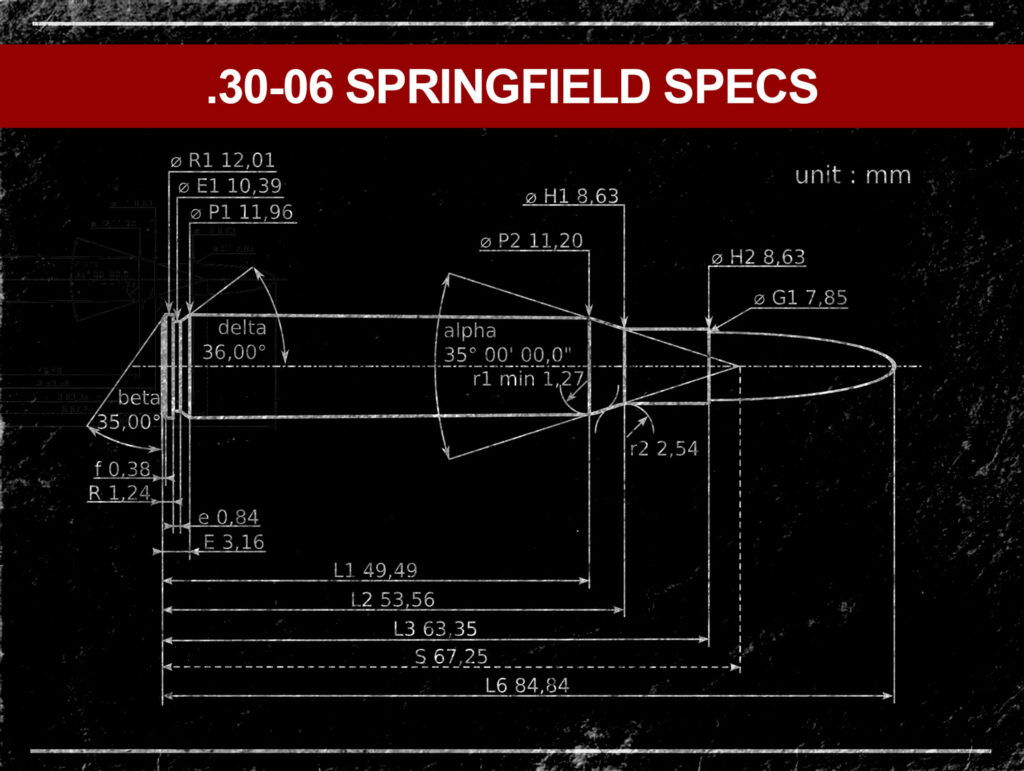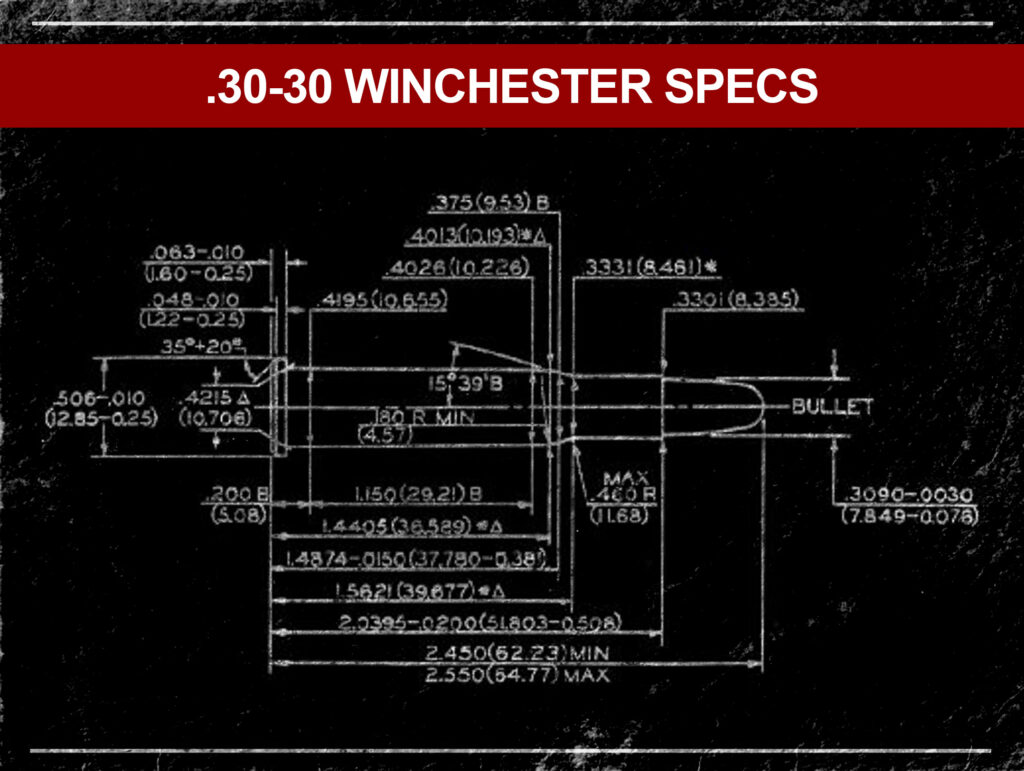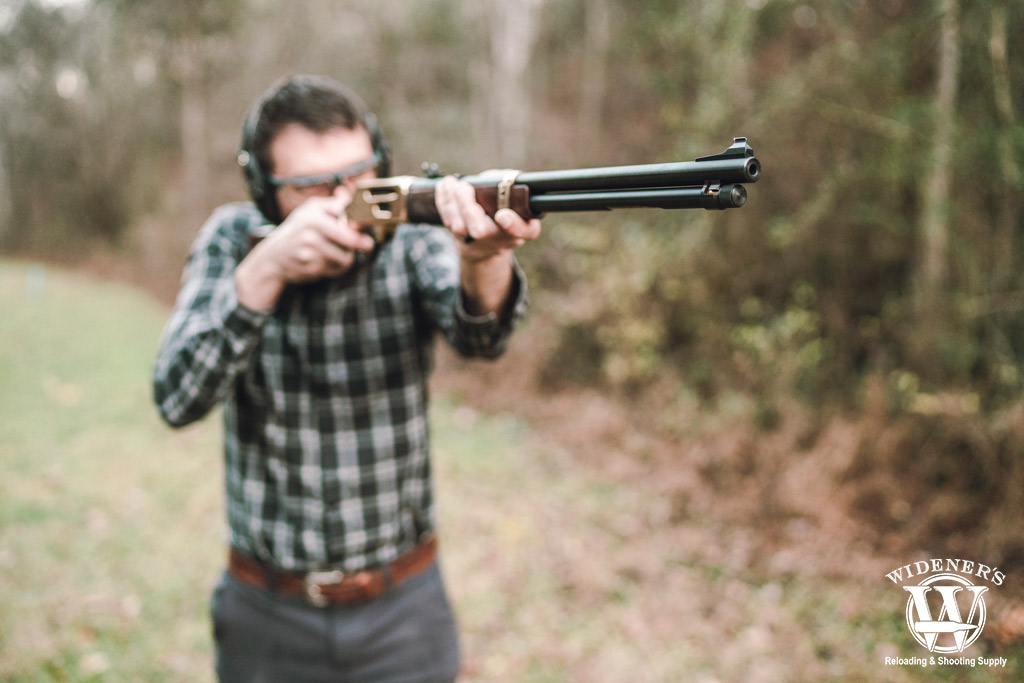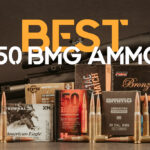

From the battlefields of war to the deepest woods, the 30-06 VS 30-30 debate rages on. The .30-30 has arguably downed more deer than any other projectile in history. Thousands of seasoned hunters swear by it, and .30-30 loyalists wouldn’t dream of venturing into the woods with any other cartridge.
However, an equally passionate group of gun owners believe another .30 caliber cartridge reigns supreme. As the bigger, heavier younger brother of the .30-30, the .30-06 boasts better range, velocity, and stopping power. Allied soldiers used it to win both World Wars, and hunters have since adopted it to take on big game.
Whether you want to fill tags or just have a little fun at the range, both cartridges can deliver. The question is, which cartridge is the better all-around projectile?
Join us in this .30-06 VS .30-30 comparison as we explore the history and capabilities of these two storied cartridges.
30-06 VS 30-30

.30-30(Left) is mostly a hunting round, while the .30-06 (Right) handles hunting and range distance duties nicely.
Let’s take a quick look at the differences. .30-06 is a larger cartridge than the .30-30. The 30-06 cartridge measures 7.62x63mm and was designed for military use in the 1903 Springfield rifle. The smaller .30-30 measures 7.62x51mmR and is by far the most popular cartridge for lever action rifles. You’ll find both out in the woods as they are commonly used centerfire hunting rounds.
In terms of ballistics, the .30-06 bullet has more velocity (capable of 2,900+ FPS), and more energy (capable of 3,000+ FT LBS) than the .30-30. This is partially because the .30-06 has a longer case length allowing it to hold more powder. The .30-06 has a maximum pressure of 60,000 PSI. While the smaller .30-30 cartridge tops out at 42,000 PSI.
| Cartridge Specs | .30-06 | .30-30 |
|---|---|---|
| Parent Casing | .30-03 Sprg | .38-55 Win |
| Bullet Diameter | .308″ | .308″ |
| Neck Diameter | .340″ | .330″ |
| Base Diameter | .471″ | .422″ |
| Case Length | 2.494″ | 2.039″ |
| Overall Length | 3.34″ | 2.550″ |
| Grain Weight | 125gr-220gr | 110gr-190gr |
| Max Pressure (SAMMI) | 60,000 PSI | 42,000 PSI |
Dimensions for the .30-06:

The .30-06 is a centerfire cartridge with a larger case, and powder capacity compared to the .30-30.
- Designed: 1906
- Designer: Springfield Armory
- Type: Centerfire Rifle
- Case capacity: 68gr H2O
Dimensions for the .30-30:

.30-30 has the same bullet diameter as the .30-06, however, its shorter case is similar in length to the .308 Win.
- Designed: 1895
- Designer: Winchester
- Type: Centerfire Rifle (Rimmed)
- Case capacity: 45gr H2O
History of the 30-06 VS 30-30
The .30-30 was one of the first cartridges designed for smokeless gunpowder. Originally dubbed the .30 Winchester Centerfire, this cartridge was developed for the Winchester Model 94 lever action rifle. The Model 94 was launched in 1894, and the .30-30 came out one year later.
The .30-06 was developed about ten years later for the United States Army in 1906, which is why we referred to it as the .30-30’s younger brother. The U.S. Army standardized and adopted the .30-06 its official rifle cartridge and continued doing so into the 1970s.
A slew of historic weapons systems used the .30-06, including the M1903 Springfield Rifle, the M1917 Enfield, the Browning Automatic Rifle (BAR), and my personal favorite, the M1 Garand rifle. This powerful cartridge played an integral role in battles across the globe, from the beaches of Normandy to the deserts of Africa and the shores of western Pacific barrier islands.
Use Cases for the 30-06 vs. 30-30
With such rich histories, it is no wonder hunters become passionate about their favorite rifle cartridges. The .30-30 is over 100 years old and fired from a lever-action rifle. On the other hand, the .30-06 has proven itself in combat and helped America win decisive victories on a global scale.
While we can take a moment to appreciate the historical significance of these cartridges, it’s time to shift our focus to modern use cases for the 30-06 VS 30-30.
The primary use case for both cartridges is hunting. The .30-30 is quite capable at short to moderate distances. Inside the 150-200 yard range, it can reliably take down deer, feral hogs, and even black bears.
The .30-06’s 150-grain bullet packs more wallop and has an incredibly flat trajectory. As such, you can use it to take on mule deer and whitetail. If you swap out the 150-grain bullet for a 180-grain alternative, you can down elk, black bear, and moose.
Ballistics: 30-06 vs. 30-30
The best way to settle any great ammunition debate is to examine ballistics data. By considering ballistics performance, we can look past nostalgia and other personal sentiments that muddy the waters during any discussion. That being said, the numbers below are taken from the manufacturer’s 24-inch test barrel. Your results will vary depending on your barrel length, twist rate, and a variety of other factors.
Here is how these two cartridges stack up on the range:
Velocity Considerations
Generally speaking, the faster a bullet travels, the better it fares in terms of wind resistance, terminal ballistics, and trajectory. The velocity discussion can be complex, as each ammo type has unique performance characteristics. That being said, the Springfield .30-06 is the winner in velocity.
Let’s discuss the general velocity ranges of each ammo type to keep things as simple as possible. Typically, .30-30 cartridges produce velocities between 2,200 to 2,700 FPS. The .30-06 edges it out with speeds ranging from 2,500 to almost 3,000 FPS.
Big Energy
Unsurprisingly, the faster .30-06 also has more muzzle energy. For the most part, .30-30 cartridges produce muzzle energy somewhere in the neighborhood of 1,900 foot-pounds. The .30-06 pumps out around 2,600-2,800 foot-pounds of muzzle energy. Once again, the ballistic edge goes to the Springfield .30-06.
Trajectory/Flight Path
The .30-06 and .30-30 both have a relatively straight trajectory out to 100 yards. But by the 200-yard mark, the faster, harder-hitting .30-06 begins to establish dominance. Most .30-06 rounds drop around 3-4 inches at the 200-yard threshold. Comparatively, the .30-30 drops 7-8 inches. If you’re hitting targets at a distance, the advantage goes to the Springfield .30-06.
Standard Ballistics
The 150gr FMJ in .30-06 is a legendary performer. It hits 2,910 FPS in muzzle velocity leaving the test barrel, with an impressive 2,820 FT LBS of energy. Bullet energy stays well over 1,500 FT LBS out to 300 yards and beyond, giving it way more stopping power than the .30-30. Bullet drop is non-existent at 100 yards and only 7.4 inches at 300 yards, showing off its impressively flat trajectory.
For a 150gr LRN .30-30 cartridge, you’ll get a respectable muzzle velocity of 2,390 FPS, and 1,276 FPS at 300 yards. The energy will be about 1,900 FT LBS at the muzzle, dropping all the way to 542 FT LBS at 300 yards. Bullet drop is negligible at 100 yards and falls 29.6 inches at the 300 yard mark.
| Caliber | Bullet Type | Bullet Weight | Velocity (Muzzle) | Energy (Muzzle) | 100 Yards (Velocity/Energy) | 200 Yards (Velocity/Energy) | 300 Yards (Velocity/Energy) |
|---|---|---|---|---|---|---|---|
| .30-06 | FMJ | 150gr | 2,910 FPS | 2,820 FT LBS | 2,683 FPS/2,397 FT LBS | 2,466 FPS/2,026 FT LBS | 2,260 FPS/1,701 FT LBS |
| .30-30 | LRN | 150gr | 2,390 FPS | 1,902 FT LBS | 1,959 FPS/1,287 FT LBS | 1,581 FPS/832 FT LBS | 1,276 FPS/542 FT LBS |
Hunting Ballistics
The 150gr SP in .30-06 is a deer hunter’s dream. It hits 2,910 in muzzle velocity leaving the barrel, with an impressive 2,820 FT LBS of energy. Bullet energy stays well over 1,000 FT LBS to 300 yards and beyond, giving it more power to drop a deer at a distance than the .30-30. Bullet drop is negligible at 100 yards and it stays strong, only dropping 8.7 inches at 300 yards.
For the 150gr JSP round in .30-30, you’ll get a muzzle velocity of 2,390 FPS, which drops to 1,399 FPS at 300 yards. The energy output will be 1,902 FT LBS at the muzzle, dropping to 652 FT LBS at 300 yards. That’s still enough to take a deer at that range, which is saying something for this older design. Bullet drop is minimal until 300 yards when it falls about 15.9 inches below the point of aim.
| Caliber | Bullet Type | Bullet Weight | Velocity (Muzzle) | Energy (Muzzle) | 100 Yards (Velocity/Energy) | 200 Yards (Velocity/Energy) | 300 Yards (Velocity/Energy) |
|---|---|---|---|---|---|---|---|
| .30-06 | SP | 150gr | 2,910 FPS | 2,820 FT LBS | 2,217 FPS/1,794 FT LBS | 2,273 FPS/1,721 FT LBS | 1,988 FPS/1,316 FT LBS |
| .30-30 | JSP | 150gr | 2,390 FPS | 1,902 FT LBS | 2,019 FPS/1,358 FT LBS | 1,686 FPS/947 FT LBS | 1,399 FPS/652 FT LBS |
Recoil
At this point, things are looking pretty lopsided. The .30-06 edged out the .30-30 regarding trajectory, velocity, and muzzle energy. But the .30-30 is the clear winner in terms of recoil. Its design purpose was to generate light recoil, making it a favorite among deer hunters nationwide. There’s not anyone who has shouldered both rifles who would disagree. They both have a kick, but the .30-30 kicks a little bit softer.
Common Bullet Types

Hornady’s LEVERevolution ammo gives the beloved .30-30 a modern cartridge option.
For the most part, you can only find .30-30 ammo in round-nose and flat-nose loads. These common loads usually contain 150-grain or 170-grain projectiles. For those into reloading you can find, or cast your own lead bullets for those purposes.
If you aren’t familiar with lever-action rifles or other tubular magazine-fed weapons systems, the cartridges are stored end-to-end. If the bullets had a pointed tip, the weapon’s recoil could cause the tip of one projectile to activate the primer of the round in front of it. Talk about a rough day at the range.
That said, there are a few instances where you can use tipped rounds in a lever-action rifle. A prime example is the Hornady LEVERevolution projectile. These cartridges contain a patented “elastomer” tip, providing better ballistic coefficients and enhanced performance.
Since .30-06 ammunition goes into bolt-action, clip-fed, or magazine-fed weapons systems, a much broader array of bullet types is available. You can get your hands on .30-06 cartridges commonly ranging from 125-grain to 220-grain. Some of the most popular types of .30-06 ammunition include soft-point, hollow point, and full metal jacket.
Availability
In terms of availability, these projectiles are dead even. Any well-stocked gun store or sporting goods facility should have several variants of both cartridges. You can also find either option on online ammo platforms like Wideners.
As for cost, the .30-06 is usually a bit cheaper than the .30-30. This should come as no surprise, since lever-action rifle ammo is historically on the costlier side. Generally speaking, you can expect to pay about $5-$7 more per box when buying 30-06 VS 30-30 cartridges.
30-06 VS 30-30: Clear Winner?

Deer hunting? Nothing wrong with the .30-30, but the .30-06 does a better job at distances beyond 100 yards.
We strive to put these head-to-head debates to bed with hard-hitting facts and undeniable ballistics data whenever possible. However, the debate between 30-06 VS 30-30 is a close call. For all intended purposes, the legendary .30-30 handles its own. It may be an outdated cartridge, but it still does its job extremely well. If it’s all you’ve got to work with, it’s not going to let you down.
If you want a capable hunting round but want to avoid joint-rattling recoil, the .30-30 Winchester is as good a choice as any. At 100 yards it provides performance that sportsmen can brag about back at the lodge. Plus, you get to shoot it out of a lever-action rifle. That’s what we call a win-win.
Conversely, if you need a far-reaching projectile with plenty of accuracy, velocity, and stopping power, the .30-06 will deliver every time you pull the trigger. It has the energy to take down big game at great distances, and keep it down for good. It’s a battle-hardened round with a reputation for winning. If I were a betting man, it’s where I’d put my money.
The bottom line is you can’t go wrong with either cartridge. Pick the one that works best for your budget and needs.


